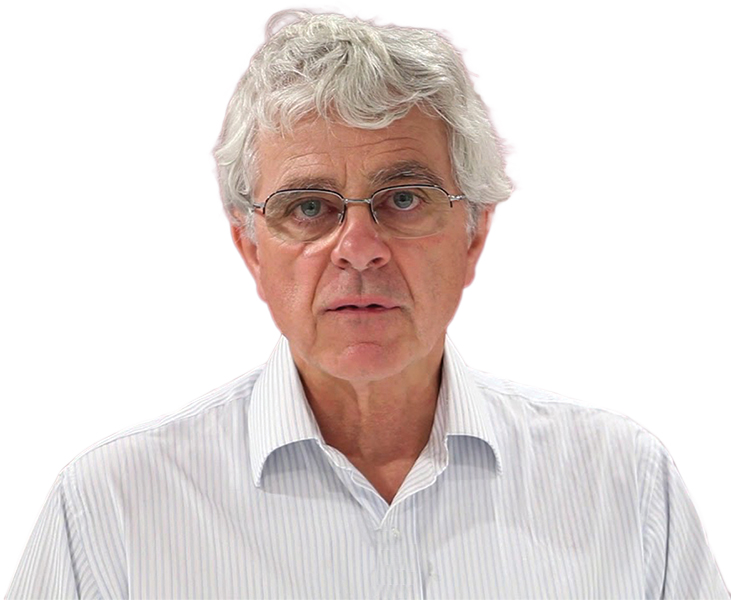
Because the great majority of criminal cases are finalised with sentencing following a plea of guilty, the law-abiding citizen hears, reads and sees too little about the vital role played by crime scene examiners and forensic scientists in the investigation of crime, writes HUGH SELBY.
THE importance of fingerprinting has been widely known for more than a century; however, the range of contemporary forensic science disciplines is broad, embracing many fields of science, and making use – as examples – of physics, chemistry, botany, Bayesian statistical methods, biology, soil science, entomology, speech identification, and forensic IT.

When DNA testing arrived in the mid-1980s it was a game changing crime-solving tool. It was, and still is, such a complex, technical field that its strengths and limitations are not well understood (and probably never will be) by nearly all those police, lawyers, judges and jurors who rely upon its results. But, understood or not, it is accepted as proof.
Just how important DNA findings are to our contemporary criminal law system has been shown by the two inquiries into the serious shortcomings in the Queensland State DNA laboratories examined by, first the 2022 Sofronoff Inquiry, and second the 2023 Bennett Inquiry.
Both inquiries were conducted by eminent, recently retired judges. Both had experienced barristers as counsel assisting. Both called witnesses who exposed frightening, but avoidable, problems in the procedures followed in that laboratory over many years. Frightening because those procedures led to reported results that misled police, prosecutors, defence counsel, and trial fact finders.
With DNA results that place an alleged perpetrator at a crime scene there is a good prospect of a guilty plea. Without such results there is good reason to plead not guilty. After all the defence can cross-examine along these lines:
Q: These days DNA testing goes from strength to strength doesn’t it?
A: Yes.
Crime scene examiners are well trained aren’t they?
Yes.
So well trained that if there is something to find that can be tested then they’ll find it, won’t they?
They should.
No one has criticised the crime scene work in this investigation have they?
No.
By the way, “every contact leaves a trace” doesn’t it?
That’s what we are taught.
Because it’s a basic principle for crime scene work isn’t it?
Yes.
The DNA lab received possible samples from the crime scene examiners?
Yes.
And, using current testing methods, those samples were tested?
Yes.
By forensic scientists who were well trained and whose expertise was subject to quality control?
Yes.
And the results – from well-trained scientists using those state-of-the-art methods – did not identify on any sample any DNA sourced from Mr/s Smith, the accused in this trial, did they?
No.
In their closing argument the defence will point out that no DNA traces from the accused were found, despite the best training and the best methods. Therefore, the jury should have a doubt about the prosecution theory that the accused played any part in the crime. If there’s a doubt, or should be, then a verdict of not guilty must follow.
The Queensland Inquiries highlighted how easily scientific rigour can be bent to managerial convenience, to respond to funding/staffing shortfalls, or in response to external pressures (such as police). To err is human and it is humans who manage our laboratories.
It is also humans who work at crime scenes and conduct the tests. They too may err but for other reasons: lack of good supervision, use of new methodologies or technologies that have not been properly validated, and/or a lack of independence with a bias towards helping police investigators that may range from barely recognised preference to rank misconduct.
The latter is to be seen in actions of a former forensic scientist with key responsibilities in the notorious “Four Winds” yacht (Sue Neill-Fraser) murder case from 2009 in Tasmania. Throwing aside her training, experience and the confirmatory test results that there were no confirmed traces of blood in the yacht’s dinghy, she told the jury that she could tell there were traces of blood.
The presence of such blood was important for the prosecution case theory that the accused put the deceased into the dinghy before throwing his body overboard.
But I must not be critical of her: the Tasmanian legal, political, police and media establishment have never seen any reason to be critical of her contribution to convicting the wrong person.
A few decades ago there was a lively debate about whether forensic laboratories should stand alone or be within the police command structure.
The argument for independence from police command was the inevitable contamination of scientific rigour by “our job is to secure a conviction”.
These days the experiment with “independence” has largely been abandoned. The recent Queensland experience of a less than credible “independent” approach and a lack of proper consultation with police will probably accelerate the push to have police careerists “manage” forensic labs and their staff. Our scientists will find it difficult to not be a prosecution-biased forensic service.
In truth the focus upon structural independence or integration was always the wrong question. Independent thinking and professional integrity are aspects of an organisation’s culture, aspects that are strongly influenced by leadership/management values and conduct.
It’s not a white coat, a uniform or a business attire that dictates the management approach. What matters is a strong commitment throughout the organisation to the fundamental values that entail looking at alternate hypotheses, rigorous methodology, careful expression of conclusions, internal and external review of every aspect of the testing process, and – above all – a willingness to admit error, to learn from error, and to take responsibility. Do we have such leaders? Are such operating values even feasible now?
That willingness is so rare that when it occurs it must be applauded. Victoria’s prosecutors did it when they discovered that contamination within a victim examination suite had led to the conviction of an innocent man for rape.
Baltimore’s prosecutors did it last year when they discovered that material had not been shared with the defence for Adnan Syed. They went further, had samples re-examined with improved DNA techniques, and identified the true perpetrator. Mr Syed was convicted as a teenager. When released he had spent more of his life in prison than out of it. Hats off to the Baltimore team.
Wrongful convictions and wrongful acquittals are inevitable (here’s my column on second appeals) which makes it so concerning that Australian forensic science leadership has been the unheard voice as worrying stuff ups continue to come to light.
Some years ago prosecutors were keen to present as experts a few people who claimed to be better than anyone else at recognising/identifying suspects from poor images on CCTV. They could see what we could not.
More recently some prosecutors have been prepared to call forensic pathologists to give evidence about blood spatter interpretation and the estimation of blood volume in a blood pool. They lacked the training and experience bases to give such evidence. It should concern everyone both that there are pathologists prepared to give opinions about blood spatter and volume, and that there are prosecutors prepared to call them to give evidence.
Misuse of evidence derived from psychology seems to be irresistible. Battered woman’s syndrome was followed by recovered memory and parental alienation syndrome. All of these are best called pop sideshows.
Nowadays there is the worrying claim that presenting jurors with an academic psychologist’s views about the results of a lot of research material about familial violence will assist those jurors to realise that the complainant in their trial is wholly credible and the accused is a scum.
That the jump from generalised results to a particular case lacks any persuasive logic seems beyond the grasp of too many ambitious prosecutors.
Our courts still permit police officers to offer expert opinion that a recorded voice is the voice of the accused – a useful advantage when jurors must sit through painful hours of intercepted phone calls. These police become ad hoc experts for the case when they are not experts at all.
Fortunately, some valuable work, with judicial interest, is being done in Australia that demonstrates how quickly we become primed to hear what we want to hear: for example, distorted utterances will be heard as confessions.
Fortunately too, there has just been an exciting example of science leadership: the role played by the Australian Academy of Science in the expert evidence put before the recently concluded Kathleen Folbigg Inquiry in NSW conducted by former Chief Justice Bathurst.
Promptly after the release of the Bathurst report, the Academy called for a reliability standard to determine the admissibility of expert evidence. This has been required in US federal courts for some decades, but was rejected in Australia.
The Academy’s measured and prompt response is in stark contrast to the silence from the National Institute of Forensic Science, the National Association of Testing Authorities, the Australian and NZ Forensic Science Society, and the Australian Academy of Forensic Scientists in relation both to the Folbigg case and the DNA debacle in Queensland. The latter has implications for other state/territory laboratories.
The Chamberlain case – and especially the Morling Royal Commission into that case – in the ’80s, shook up forensic services and forensic training. Perhaps it’s time – some 40 years later – for another in-depth examination.
The Academy of Science’s contributions to the Folbigg Inquiry and for the future of science in our trials will be explored at the ANU on Friday, November 17, as part of the day-long meeting, “Rethinking Scientific Communication in Courts”. More details here.
Who can be trusted?
In a world of spin and confusion, there’s never been a more important time to support independent journalism in Canberra.
If you trust our work online and want to enforce the power of independent voices, I invite you to make a small contribution.
Every dollar of support is invested back into our journalism to help keep citynews.com.au strong and free.
Thank you,
Ian Meikle, editor





Leave a Reply